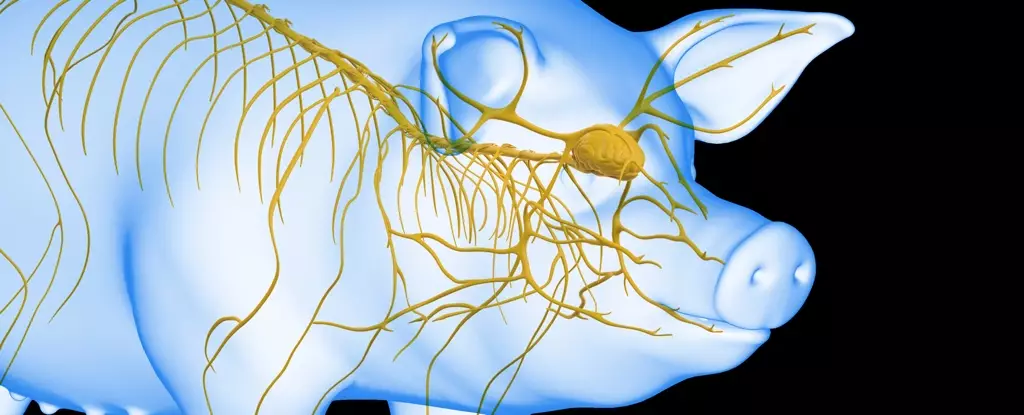Recent research conducted by a team of scientists from China has unveiled a stunning breakthrough in the field of neurological recovery following cardiac arrest. In a surprising experiment involving lab-raised pigs, researchers successfully revived brain activity nearly an hour after blood circulation had ceased. This discovery suggests that the window for effective resuscitation can be extended beyond previously established limits, offering new hope in the fight against sudden cardiac arrest—a leading cause of death worldwide.
The implications of this study extend far beyond mere academic curiosity. By incorporating a healthy liver into the life support system used during resuscitation, the team was able to sustain brain functionality for hours, a remarkable achievement that could revolutionize medical practices in emergency response and critical care.
To appreciate the significance of this breakthrough, it is essential to understand the process of cardiac arrest and its consequences. When the heart suddenly stops pumping blood, the body’s organs, particularly the brain, are deprived of oxygen and nutrients, leading to a state known as ischemia. In the brain, this can result in irreversible damage within mere minutes. The narrow window of opportunity to restore cardiac function leaves medical professionals with a daunting challenge, as each second counts.
Previous studies have established that ischemia affects multiple organs, which complicates recovery efforts. While damage to the brain is often front and center, the state of other vital organs, such as the liver, can significantly influence recuperation outcomes. However, research on the interplay between these organs during resuscitation has been limited, paving the way for this innovative study.
The Experimental Methodology
In a series of carefully designed experiments, the research team, led by physician Xiaoshun He from Sun Yat-Sen University, delved into the unique role of the liver in brain recovery post-ischemia. Utilizing 17 Tibetan minipigs, they orchestrated experiments to analyze the differences between subjects that underwent liver ischemia and those that did not.
Initially, two groups of pigs experienced brain ischemia for 30 minutes, with one group also facing loss of liver function. A control group with no ischemia served as a benchmark for the study. Upon examination, results showed that while the control group exhibited minimal brain damage, the pigs without liver ischemia fared significantly better than those with compromised liver function. This finding led to further investigational phases that would integrate a healthy liver into the resuscitation protocol.
The Role of the Liver in Brain Recovery
The researchers employed a novel life support system featuring an artificial heart and lungs to provide circulation for the pig brains. What set the experiment apart was the addition of a functioning liver to the system—a move dubbed liver-assisted brain normothermic machine perfusion.
The first series of tests connected the first group of pig brains to this life support system 10 minutes following resuscitation initiation. Initial results demonstrated that a system devoid of liver assistance allowed for some electrical activity to return for only around half an hour. However, with the integration of a healthy liver, remarkable outcomes emerged.
Researchers pushed the boundaries further by testing connection delays ranging from 30 minutes to a staggering 240 minutes post-circulatory failure. A pivotal discovery arose when brains reconnected to the liver system after 50 minutes illustrated a renewed electrical activity that persisted for six hours, opening doors to the possibility of extended resuscitation windows under optimal conditions.
This groundbreaking research suggests that the liver plays a vital role in mitigating brain injury secondary to cardiac arrest. The tantalizing results prompt further investigations into leveraging liver functionality for brain recovery, potentially reshaping protocols in emergency medicine. As the medical community grapples with the urgent need for improved recovery strategies post-cardiac arrest, this innovative approach stands as a beacon of hope.
The prospect of enhancing survival rates and recovery outcomes for cardiac arrest patients could be on the horizon, and researchers are eager to explore the future implications of these findings. With ongoing research, this powerful discovery may serve as a launching point for advanced medical technologies and treatments aimed at providing better outcomes in critical care scenarios.
As we move forward, the interplay between organ systems in resuscitation processes will likely be a focal point of future research, forever changing how we approach one of the greatest medical emergencies confronted in our time.


Leave a Reply